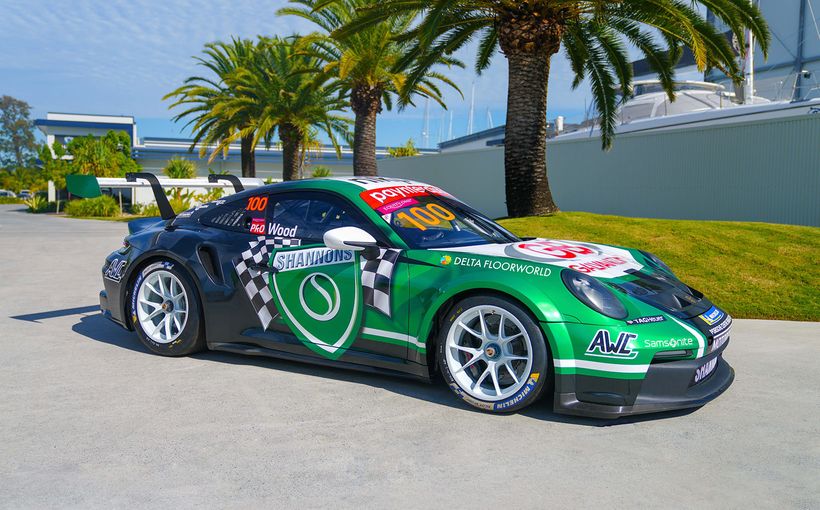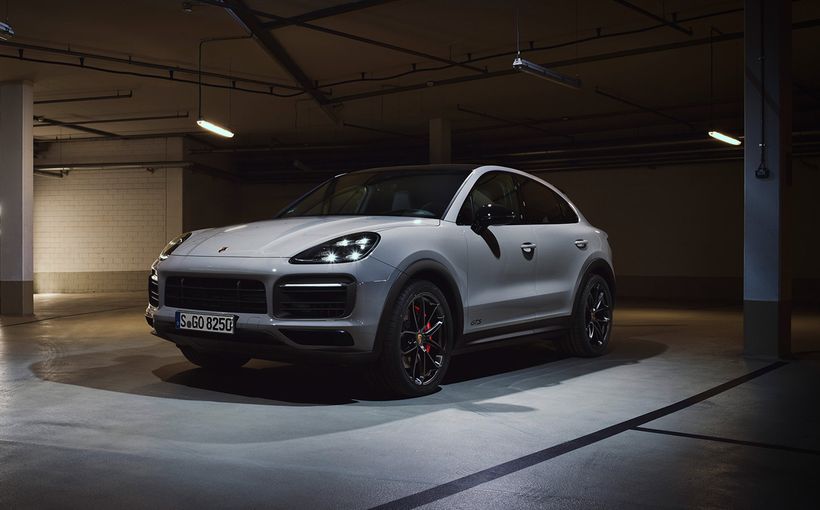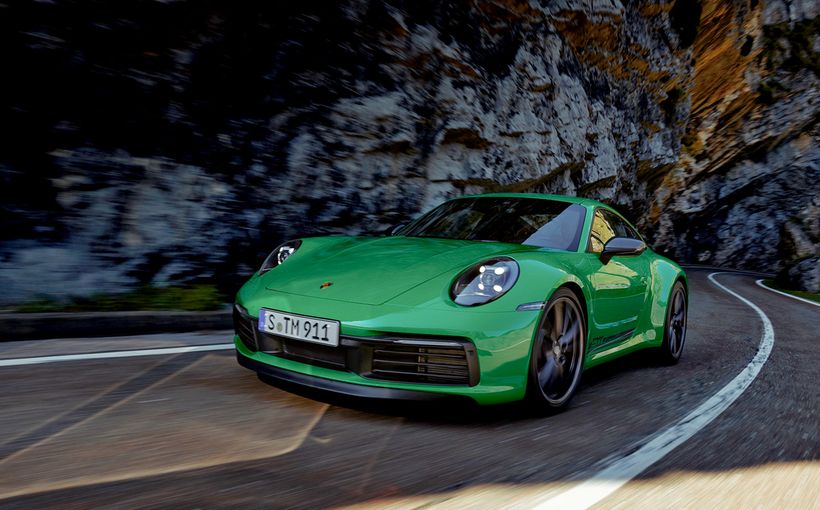2014 Porsche 911 Targa: The Original Lives Again

After corrupting its definitive and often-copied 911 Targa from 1965, Porsche has returned to the original design with a striking new version premiered at the North American International Auto Show (NAIAS) in Detroit.
Porsche’s original Targa replaced the traditional 911 Coupe roofline with a wide roll-over hoop in the centre of the passenger area. This hoop not only doubled as a B-pillar for the door glass but was hefty enough for Porsche to eliminate the 911’s C-pillar.
Anticipating tough new rollover legislation for convertibles, the original Targa was a clever attempt at covering all bases and was the only open roof 911 available until an additional full Cabriolet version was launched as an 911 SC in 1982.
The original 1965 911 Targa featured a fold-up fabric “targa-panel” and a removable rear window, leaving only the windscreen and centre hoop in place. The main roof panel had to be physically lifted up and out then folded-up and stored in the luggage compartment.

Later Targas featured a striking, one-piece permanent glass rear window that replaced the original folding plastic item. Apart from rivalling the similar rear screens on the Jensen Interceptor and Plymouth Barracuda for size and effect, the large rear screen left a flatter Targa roofline which created extra headroom and allowed easier access to the rear seats.
Leaving the rear glass in place was not seen by owners as a disadvantage as it eliminated the back-draught that swirls around the necks of occupants of a full convertible. It also reduced much of the wind roar normally associated with a full fabric roof.
British car enthusiasts often claim that Triumph was first with the quaint Surrey Top introduced as an option on the TR4. This was a hardtop that allowed owners to remove a centre panel then left the rear window in place. However, the remaining rear screen and its frame were not structural.

Triumph eventually followed Porsche with a similar B-pillar hoop for the Stag, anticipating the same roll-over requirements. The Targa idea was then adopted by most Japanese companies for their sporty models as well as several US companies and Ferrari and Fiat in Italy. Jaguar also produced an XJ-S version.
After the traditional 911 Targa was dropped in 1993 towards the end of the 964 series, Porsche applied the Targa badge to an oddball model based on the 993 series launched in 1995. This new Targa body style featured body colour outer rails that followed the lines of the normal 911 coupe joined by sliding glass panels. After introducing rattles compared to the drum-tight coupe body, this style continued until last year and was an acquired taste as it was neither coupe nor convertible.
Porsche claims that the new Porsche 911 Targa is a new Porsche sports car that combines the classic Targa concept of the legendary original with state-of-the-art roof technology.
This is the key to the new model. Owners will no longer tolerate having to lift and remove a heavy fabric roof panel before collapsing it and folding it up like a tent so it can fit into the boot.

Porsche now claims: “Unlike the classic models, the roof section on the new Targa can be opened and closed at the push of a button. When the button is actuated, the fully automatic roof system stows the convertible top behind the rear seat system, providing a real spectacle.”
“The rear-biased design of the PTM all-wheel drive fitted as standard is a typical Porsche feature, and guarantees that this latest 911 model also offers optimum driving dynamics on all road surfaces and in all weather conditions.
“With these features, the new 911 Targa is presenting itself as a high-quality, innovative remake of the classic vehicle from 1965.
“The model shares a great deal in common with the 911 Carrera 4 cabriolet models; up to the front windscreen line, the technology and body of the vehicles is more or less the same. The combination of the wide rear end that is typical of all-wheel drive models, the Targa bar and the dome-shaped rear window gives the latest 911 an extremely sporty appearance and a low-slung profile.”

The new Targa generation therefore continues in two levels as for its glass-roofed predecessors. Both come exclusively with all-wheel drive but for the first time since 1993, the Targa has its very own distinctive body style that won’t be confused with either the coupe or cabriolet.
As the classic 911 Coupe roofline becomes almost too familiar, the new 911Targa is genuinely different. It also allows owners to enjoy open roof motoring well beyond a sunroof with the option of extra privacy and protection from the elements with the side-windows up.
The entry 911 Targa 4 is powered by a 3.4-litre, 257 kW (350 hp) flat six-cylinder engine. Equipped with the Porsche Doppelkupplung (PDK or Porsche’s version of the latest twin-clutch auto/manual technology) and Sport Chrono package, the Targa 4 accelerates from zero to 100 km/h in just 4.8 seconds and boasts a top speed of 282 km/h.

The top model is the 911 Targa 4S, which delivers 294 kW (400 hp) from a displacement of 3.8 litres. The 4S reaches a top speed of 296 km/h and, with the PDK and Sport Chrono package fitted, accelerates to 100 km/h in 4.4 seconds.
Porsche advises that “deliveries of the 911 Targa 4 and Targa 4S to Australia begin in mid-2014, with the 911 Targa 4 priced from $247,900 and the Targa 4S from $285,100.”
The original Targa was always popular in Australia. Under today’s conditions, where enjoying the drive under heavily restricted speeds can be more important than outright performance, the new Targa could prove to be the most desirable and distinctive 911 for its time.
Protect your Porsche. Call Shannons Insurance on 13 46 46 to get a quote today.









